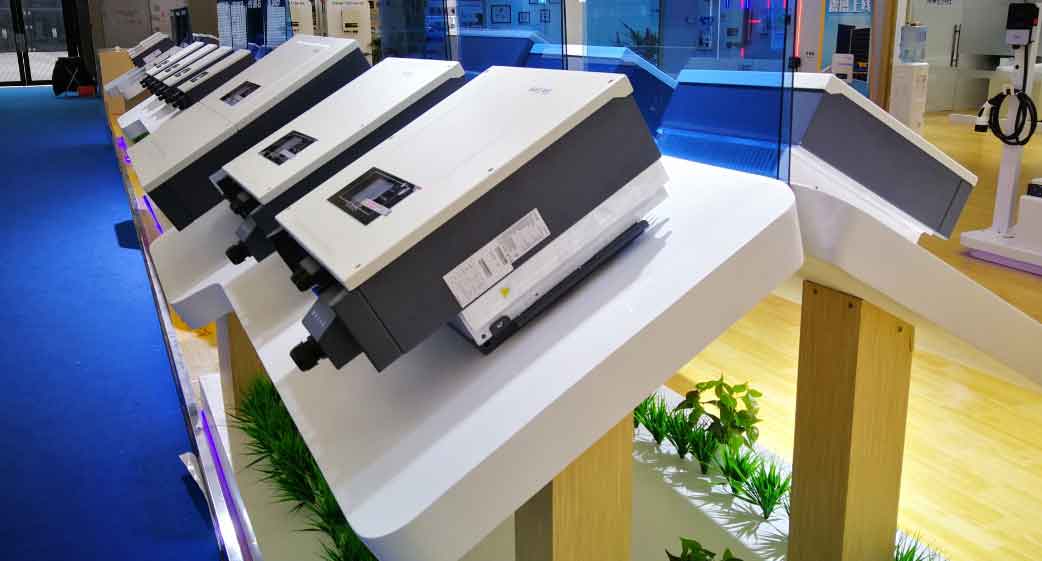1. Introduction
Solar grid-tied inverters are pivotal components in renewable energy systems, enabling efficient power conversion from photovoltaic (PV) arrays to the utility grid. Among various topologies, the LCL-filtered grid-connected inverter stands out due to its superior harmonic attenuation capabilities. However, stability challenges arise under low switching frequency (LSF) conditions, especially in high-power applications where switching frequencies are constrained to reduce losses and electromagnetic interference (EMI). This paper addresses the dual-resonance instability caused by digital control delays and LCL resonance peaks in solar grid-tied inverters operating at LSF. A novel dual-state feedback active damping (AD) scheme is proposed to suppress oscillations across both mid- and high-frequency bands, ensuring robust performance under wide-ranging switching frequencies.

2. System Modeling and Stability Analysis
2.1 LCL-Filtered Solar Grid-Tied Inverter Model
The structure of an LCL-filtered solar grid-tied inverter is illustrated in Figure 1 (omitted per guidelines). The system comprises:
- Inverter-side inductor LmLm: Filters high-frequency switching harmonics.
- Grid-side inductor LgLg: Limits grid current harmonics.
- Parallel capacitor CC: Attenuates voltage ripple.
The grid current igig is regulated via a proportional-resonant (PR) controller with digital control delay Td=1.5TsTd=1.5Ts, where TsTs is the switching period. The open-loop transfer function T(s)T(s) is derived as:T(s)=Gi(s)LmLgCs3+(Lm+Lg)s,Gi(s)=(Kp+∑k=0nKr,ks−jkω)e−TdsT(s)=LmLgCs3+(Lm+Lg)sGi(s),Gi(s)=(Kp+k=0∑ns−jkωKr,k)e−Tds
where KpKp and Kr,kKr,k are proportional and resonant gains, respectively.
2.2 Stability Challenges Under Low Switching Frequency
At LSF (fs<2fresfs<2fres, where fres=12πLm+LgLmLgCfres=2π1LmLgCLm+Lg), two instability mechanisms emerge:
- Mid-Frequency Oscillations: Digital control delays cause phase lag, triggering -180° phase crossings in the control bandwidth.
- High-Frequency Oscillations: LCL resonance peaks induce -540° phase crossings.
The combined effect creates a double-resonance instability (Table 1).
Table 1: Stability Regions Under Different Switching Frequencies
| Switching Frequency (fsfs) | Instability Mechanism | Phase Crossings |
|---|---|---|
| fs>6fresfs>6fres | High-frequency resonance | -180° at fresfres |
| 2fres<fs<6fres2fres<fs<6fres | Stable | None |
| fs<2fresfs<2fres | Mid- & high-frequency resonance | -180° and -540° |
3. Dual-State Feedback Active Damping Scheme
3.1 Adaptive Capacitor Current Feedback (ACCF)
ACCF suppresses high-frequency oscillations by reshaping the loop gain. The feedback gain KcKc is designed as:Kc=11+LgLm+λ(λ>0)Kc=1+LmLg1+λ(λ>0)
This introduces a second-order zero to cancel the LCL resonance pole. The stability criterion is:1KcLgC<fresKcLgC1<fres
3.2 Mid-Frequency Damping via Inner-Loop Feedback
To address mid-frequency instability, an inner-loop feedback path Hb(s)Hb(s) is added:Hb(s)=Kbs−jωb+KbHb(s)=s−jωb+KbKb
where ωbωb is the center frequency below fs/6fs/6. This provides phase lead and gain attenuation at critical frequencies.
Table 2: Performance Comparison of Damping Methods
| Method | High-Frequency Damping | Mid-Frequency Damping | Complexity |
|---|---|---|---|
| Capacitor Current Feedback | Excellent | Poor | Low |
| Inner-Loop Feedback | Poor | Excellent | Moderate |
| Dual-State Feedback | Excellent | Excellent | High |
The combined dual-state feedback transfer function becomes:TD(s)=Gi(s)+Kce−Tds(1+KfHb(s))LgCs2[LmLgCs3+(Lm+Lg)s](1+KfHb(s))TD(s)=[LmLgCs3+(Lm+Lg)s](1+KfHb(s))Gi(s)+Kce−Tds(1+KfHb(s))LgCs2
4. Simulation and Validation
4.1 Simulation Parameters
The solar grid-tied inverter model is simulated in PLECS with parameters listed in Table 3.
Table 3: Simulation Parameters
| Parameter | Value |
|---|---|
| Grid Voltage (ugug) | 10 kV |
| DC Link Voltage | 20 kV |
| LmLm, LgLg | 1.2 mH, 1.3 mH |
| CC | 10 μF |
| KpKp, KrKr | 8.0, 500 |
4.2 Results
- Case 1 (fs=15 kHzfs=15kHz): ACCF eliminates high-frequency oscillations (THD reduced from 8.2% to 1.5%).
- Case 2 (fs=3 kHzfs=3kHz): Dual-state feedback suppresses both mid- (500 Hz) and high-frequency (2 kHz) resonances (Figure 2).
5. Conclusion
This paper analyzes the dual-resonance instability in solar grid-tied inverters under LSF conditions and proposes a dual-state feedback AD scheme. Key contributions include:
- Adaptive Damping: ACCF autonomously adjusts to LCL resonance shifts.
- Wideband Stability: Inner-loop feedback eliminates mid-frequency oscillations.
- Scalability: The scheme is applicable to high-power solar inverters in urban distribution networks.
Future work will extend this method to multi-inverter systems with adaptive resonance tracking.
